November 13, 2014
By Darren Warner
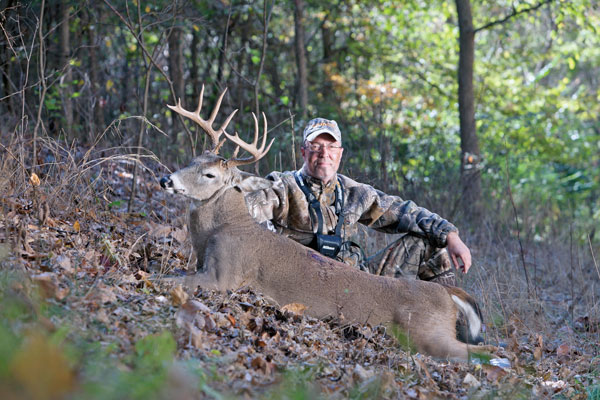 The deer had become the bane of my existence. That may be overemphasizing things a bit, but it's accurate to say that its hanging belly, dark chocolate antlers and Roman nose consumed my waking thoughts. It started in the summer, when trail cameras I'd strategically placed captured the whitetail and its burgeoning rack. By September, the buck was a bona fide Boone and Crockett trophy, and I was determined to bag it.
The deer had become the bane of my existence. That may be overemphasizing things a bit, but it's accurate to say that its hanging belly, dark chocolate antlers and Roman nose consumed my waking thoughts. It started in the summer, when trail cameras I'd strategically placed captured the whitetail and its burgeoning rack. By September, the buck was a bona fide Boone and Crockett trophy, and I was determined to bag it.
By late season, I still hadn't figured out the best way to hunt it. After the season ended, the buck walked away scot-free, and I was left obsessing over what I'd done wrong. It was only after having a conversation with a friend of mine that I understood my mistakes and why I made them. I'd never gotten a shot at the buck because I never understood what made it tick.
"If you study enough trail-camera photos, you'll realize that, like people, different bucks have different personalities," explained Neil Dougherty, an avid hunter and wildlife consultant for North Country Whitetails. "The key to bagging some bucks is to figure out their personalities and hunt them when their individual traits make them vulnerable."
If you don't think deer have distinct personality types, you're dead wrong — and your approach is leading to a lot of bucks that are still alive.
Advertisement
"I think there's a lot of collateral research that supports the belief that bucks have different personality types," said biologist Dr. Grant Woods, co-host of Growing Deer TV. "If your goal is to harvest mature bucks, you need to study the personality characteristics of individual deer."
Just as an FBI profiler analyzes cases to construct psychological profiles of criminals, we can analyze the behaviors of individual deer to construct buck personality profiles. To do this, we'll tap my experience as a former criminologist and consult whitetail experts such as Dougherty and Woods to develop distinct buck personality types and explain common behaviors associated with each one.
We'll then explore how to best hunt each personality type to improve your hunting success.
Advertisement
Personality Drives Behavior
As Woods noted, there is a lot of circumstantial evidence that supports my argument that bucks have distinct personalities that drive their behavior.
Former graduate student Gabriel Karns studied 32 bucks living at Chesapeake Farms on Maryland's Eastern Shore. Bucks were captured and fitted with GPS tracking collars that enabled researchers to monitor their movements every five minutes during the pre-rut and rut. Karns wanted to understand what compelled bucks to go on excursions, or venture at least a half mile from their home range — where the deer spends 95 percent of its time — for at least six hours.
Only 59 percent of all bucks made at least one excursion outside their home range during the pre-rut and rut. This means that nearly half of all bucks studied didn't leave their home range during breeding season. All of the bucks in the study were healthy, so individual behaviors can't be attributed to some biological deficiency. And Karns ruled out hunting pressure as the reason some bucks went on excursions.
"Regardless of whether a buck was disturbed by hunters or vehicles, flight distances never exceeded 600 meters, and no deer left its home range because of hunting-related disturbances," said Karns.
Researchers from the Caesar Kleberg Wildlife Research Institute at Texas A&M University-Kingsville have spent years tracking the movements of bucks on the King Ranch in South Texas. To date, more than 5,000 bucks have been captured and collared. Each deer wears its GPS tracking device for about six months, enabling biologists to collect 3,000-5,000 observation points.
Unlike the bucks at Chesapeake Farms, all King Ranch bucks took at least one rut excursion. Nonetheless, researcher Aaron Foley found that bucks appeared to be going on excursions for different reasons.
"Excursion characteristics were variable," said Foley. "Some were brief trips outside of home ranges while some were clearly exploratory trips."
Even when looking within individual age classes, researchers have found when it comes to adult buck travel patterns around breeding season, there is no pattern at all.
"Bucks are individuals with different personalities, so you can't say age influences the size of bucks' home ranges, how often they move or how far they travel during the rut," said Dr. Mickey Hellickson, a biologist and owner of Orion Wildlife Management Services.
Personality Types
To determine the personality type of individual deer, blanket your hunting area with trail cameras and record whitetail behavior. When conducting a deer survey, biologists generally recommend about one camera for every 100 acres you own. You'll need at least three times more cameras to develop accurate personality profiles on individual bucks — more if your hunting area has numerous entry/exit points and/or highly varied terrain.
Most of today's trail cameras capture video footage, giving you a wealth of data. But it takes considerably longer to upload and play video than photos, so I don't recommend setting every camera you own to video mode. Instead, capture video at sites where deer interactions are high.
A word of caution before embarking on a buck-profiling project: determining individual buck personality types is time-consuming and can't be accomplished by just reviewing a few photos of each deer.
"One of the biggest mistakes hunters make when they're trying to determine the personality types of individual bucks is that they don't have enough data points to make an informed decision," added Dougherty. "They get five or 10 photos of a buck where it looks aggressive and think the deer's dominant. You need more encounters with bucks before making decisions about their personalities."
After studying hundreds — or even thousands — of photos and videos on individual deer, you'll see different personality types emerge. The goal is to establish a behavior baseline for each shooter buck's personality type before hunting season begins.
In no particular order, carefully studying many data points on individual bucks will reveal the following personality types:
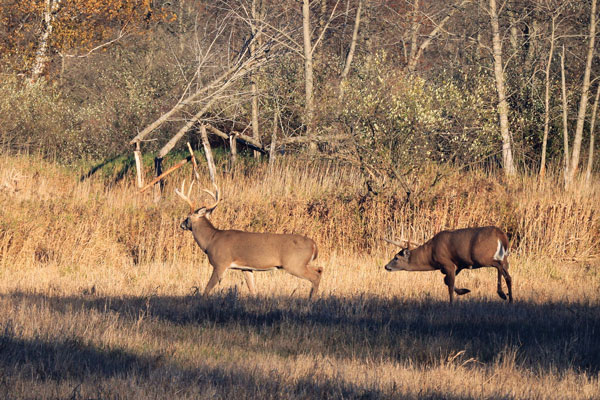 Aggressive Fighter: This buck carries its head high and is quick to pin its ears back and fight if another buck invades its personal space. When an aggressive fighter (AF) feels threatened, the hairs on the back of its neck will stand up and its bold body language will show it's a force to be reckoned with.
Aggressive Fighter: This buck carries its head high and is quick to pin its ears back and fight if another buck invades its personal space. When an aggressive fighter (AF) feels threatened, the hairs on the back of its neck will stand up and its bold body language will show it's a force to be reckoned with.
AF bucks generally cover a lot of ground and rut extremely hard. They will travel far, so many of them will get killed by other hunters around breeding time. But take heart, because an AF buck can be harvested in early season, during the height of the rut or even during the post-rut when they're trying to pack on pounds before bad weather hits.
An AF buck will tolerate more hunting pressure than other personality types. So, you can hunt it hard early in the season near food sources, in staging areas and transition zones where does hang out during the rut and again near food in the post-rut. Even AF bucks will go nocturnal due to hunting pressure, so don't overdo it.
Dougherty likes to hunt an AF buck two or three times in early season, as much as possible during the rut, and three or four times in late season. Feel free to call or rattle a lot when hunting an AF buck. They tend to quickly respond to other bucks, particularly ones that appear to be snort-wheezing.
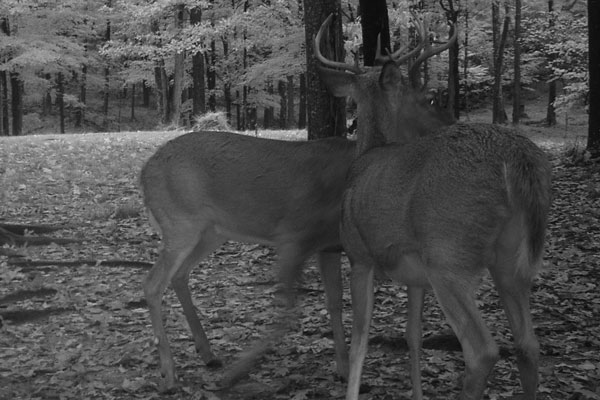 Shy and Subordinate: Compared to an AF buck, a shy, subordinate (SS) buck is at the opposite end of the personality continuum. It often carries its head down, particularly when it encounters a dominant buck. It will enter a food source with other deer to blend in, and feed with its rump facing others to avoid eye contact.
Shy and Subordinate: Compared to an AF buck, a shy, subordinate (SS) buck is at the opposite end of the personality continuum. It often carries its head down, particularly when it encounters a dominant buck. It will enter a food source with other deer to blend in, and feed with its rump facing others to avoid eye contact.
SS bucks tend to be older and rarely venture from their home ranges. They may not participate in breeding at all. The bad news is that SS bucks are quick to react to hunting pressure and become nocturnal. While an SS buck can be killed before, during or after the rut, your best odds are late in the season when cold temperatures compel the deer to feed heavily.
Hunt SS bucks in transition areas that are close to food. Make sure to identify the late-season food sources before the rut so you can set up stands without alerting an SS buck you'll be hunting it hard in late season. Never use aggressive vocalizations on an SS buck. You can try luring it into shooting range with a soft grunt or two, but leave the rattling antlers at home.
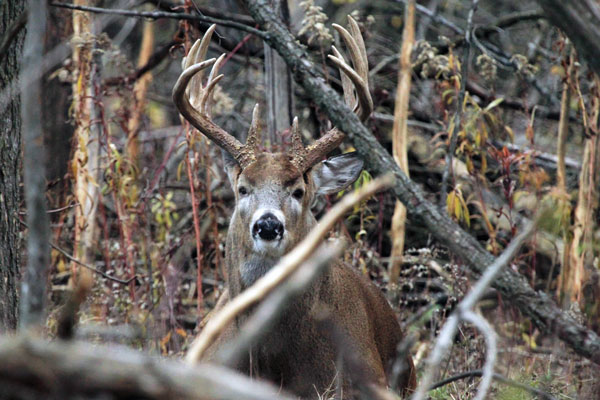 Aloof and Mysterious: This buck is a loner. It rarely hangs out in a bachelor group and stays away from the crowd where deer congregate. If you're glassing a soybean field and notice a buck standing by itself away from the herd, it's probably an aloof and mysterious (AM) buck. An AM buck doesn't look for a fight, but will mix it up hard when it feels threatened.
Aloof and Mysterious: This buck is a loner. It rarely hangs out in a bachelor group and stays away from the crowd where deer congregate. If you're glassing a soybean field and notice a buck standing by itself away from the herd, it's probably an aloof and mysterious (AM) buck. An AM buck doesn't look for a fight, but will mix it up hard when it feels threatened.
AM bucks are smart and use their noses proactively to stay clear of danger. They're difficult to pick up on trails, because they often travel where other deer don't. An AM buck is more killable than an SS buck, but putting your tag on one requires a firm understanding of all available food sources on your property and a willingness to set your hunting stands in unconventional locations.
An AM buck takes the path less traveled, so that's where you need to be to kill one.
"An aloof buck may enter a food source from another direction than other deer, or even go to a less preferred food source to feed," Dougherty explained.
Because an AM buck is a loner, you can use physical signs of its travels — such as hoof marks — and your trail cameras to pattern it. Bucks in this category participate in the rut, making them vulnerable to a hunter's shot.
They also hit available food sources heavily after the rut to prepare for winter. Since an AM buck isn't found where other deer roam, you'll see few deer when hunting. But when you do catch a glimpse of antlers, they'll belong to an AM buck.
Vocalize carefully to an AM buck. Read its body language to see if it's reacting positively to your call, or if he's disinterested or frightened. If the buck doesn't immediately respond to your call, don't bother calling.
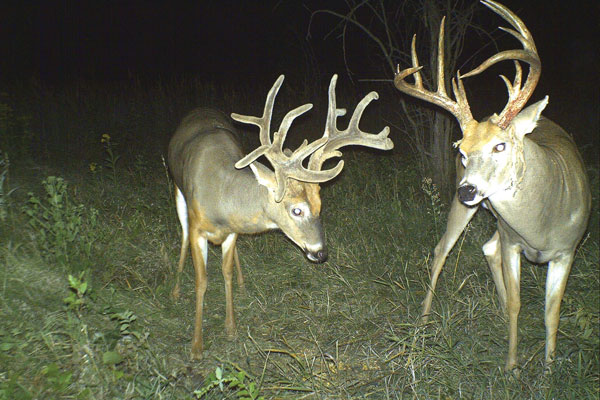 Unaware and Senile: This is the buck personality type of choice for Woods to hunt. An unaware and senile (US) buck is mature, usually a loner and tends to focus solely on eating and sleeping.
Unaware and Senile: This is the buck personality type of choice for Woods to hunt. An unaware and senile (US) buck is mature, usually a loner and tends to focus solely on eating and sleeping.
"These bucks have let their guard down and are very vulnerable to hunters," Woods said.
A US buck doesn't participate in the rut and often stays clear of other deer. Woods believes the best time to take a US buck is late in the season wherever food is limited. Rarely will a US buck respond to calling, so don't even bother packing your grunt tube when hunting one. Set up near food and you'll bring a US buck home in late season.
Changes May Occur
Note that none of the personality profiles mean a particular buck will behave consistently all the time. For example, an aloof buck that has just gotten its butt kicked by another buck may act more aggressive than usual with another buck to re-exert its place in the male pecking order.
Just like humans, some bucks change their personalities as they mature. A buck that was aloof and mysterious at 3€‰1„2 may become unaware and senile at 5€‰½. So, don't stake your entire hunting strategy on the personality profiles you've developed for individual bucks. Pay attention to other influences on deer behavior, such as the age structure of bucks where you hunt and changes in preferred food sources so you can adjust your hunting strategy accordingly.
Finally, just like humans, bucks have bad days, too. Some days they may react more strongly to something in their environment, and rarely do we know what it is. The best we can do is construct a profile of how a particular buck usually responds to other deer and other things in its environment, and then devise a hunting strategy that takes advantage of the deer's unique personality traits.
If you do these things, you'll be way ahead of other hunters and well on your way to consistently taking mature bucks.
